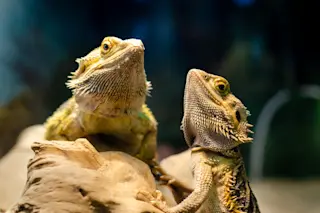Complex creatures consist of trillions and trillions of cells, and few of those cells appear and act identically to one another. In fact, the small structures that make up an animal’s tissues are specialized. They come in all sorts of shapes and sizes, contain all sorts of structures and perform all sorts of functions.
This diversity of cells didn’t emerge overnight. A series of four new studies published in Science uses the genetic expressions of the different types of cells to better demonstrate their development over time, specifically inside reptile and amphibian brains.
Scientists have long understood that different types of cells exist throughout the body are differentiated by different expressions of genes. But only recent research has begun to unravel the full extent of this diversity. In the past few years, for instance, studies have shown that hundreds of cell types exist even within small sections of the brain ...















